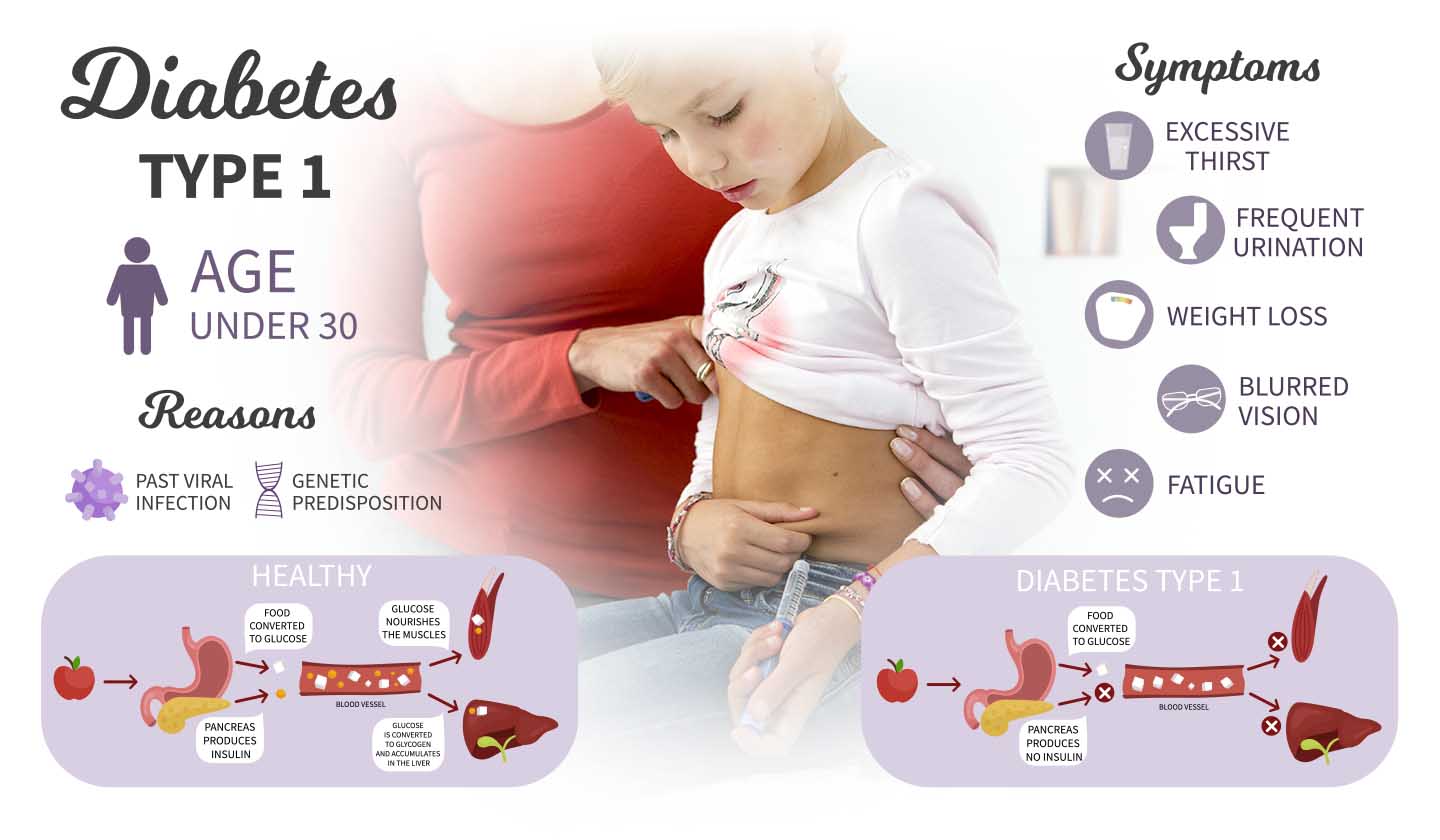Endocrine system
Diabetes - When your body doesn't know what to do with sugar

At its simplest, we can say that this is a disease caused by the fact that cells are unable to absorb sugar (glucose) from the blood and use it as energy necessary for the development of the normal functions of any living organism. And, for that reason, the human body will be at risk of failing to perform its normal functions.
It is like a key that does not open the lock; in other words, the sugar exists but does not enter the cells to feed them.
How many types of diabetes are there?
There are, generally speaking, two major types of diabetes.

Type I diabetes is also called insulin-dependent diabetes, since people who suffer from this condition do not produce enough (if any) insulin, which is the main anabolic hormone of the body. Under normal circumstances, insulin is “produced” by an organ called pancreas. Therefore, in order to survive, these people need to get insulin artificially from an exogenous (external) source. Diabetes frequently affects younger people and is typically manifested during childhood.

Type II diabetes is also called non-insulin-dependent diabetes since the pancreas continues to produce some insulin. It usually appears later in life, affecting mainly the elder population. However, it gets more and more frequent to see individuals in their forties, who are overweight or even obese, suffer from this disease.
But why does type II diabetes affect young people more and more frequently?
This is related to modern eating habits which are "stuffed" with processed products high in sugar and "fast food" (not only hamburgers, pizzas and sandwiches filled with sauces, but also ready-made food).
What are the main signs and symptoms?
The classic triad of diabetes symptoms is:
- Polyuria (increased urinary volume),
- Polydipsia (increased thirst and increased fluid intake),
- Polyphagia (increased appetite).
Other important symptoms include:
- Weight loss
- Blurred vision
- Characteristic smell in urine - Diabetes is also known as Mellitus due to the characteristic sweet (honey) smelling urine
These symptoms can develop quite quickly in type 1, particularly in children (weeks or months) or can be subtle or completely absent - and they can also develop much more slowly - in type 2.

Risk factors
The main risk factors for the development of diabetes are
- Age over 45;
- Obesity (body mass index > 25kg/m2);
- Family history of diabetes in first-degree relatives;
- Systemic arterial hypertension;
- HDL Cholesterol below 35mg/dl and/or triglycerides above 250mg/dl;
- Individuals who are members of risk populations (African American, Hispanic, Scandinavian, and Indigenous).

How can we prevent or delay the onset of diabetes?
If you want to avoid suffering from diabetes, try to follow these three suggestions: moderate the intake of sweets, alcoholic beverages and soft drinks, exercise regularly and measure your blood sugar level (generally referred to as diabetes measurement) periodically, especially as of the age of 40 or if you are overweight, at the pharmacy.
However, as there are many people who do not know they are diabetic, discuss this matter with your doctor, so he/she can prescribe you other tests and the appropriate treatment.

António Hipólito de Aguiar
(Farmacêutico; Docente Universitário)
Também lhe poderá interessar
Cardiovascular system
The dangerous and silent hypertension
Cardiovascular system






